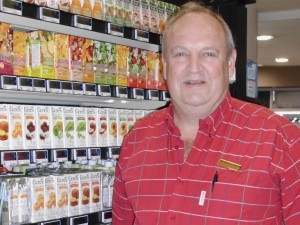
Pricer electronic shelf labels (ESLs), exclusively supplied by XON in Africa, have gained significant traction with SPAR stores around the country, because the system grants retailers numerous operational benefits and significant return on investment (ROI).
The overriding response from owners of SPARs countrywide, with more than 150 already using the system, has been positive.
SPAR initially ran two pilot projects of the system in 2008 at stores in Rustenburg, where owners were willing to test the technology. "The response we got was extremely positive," says Rick Wheeler, group retail systems manager at the JSE-listed business. "Since then, none of the store owners who have adopted it have said it's a bad system, and many have said they will never look back."
He adds: "Some of the store owners have been sceptical about the investment, but they are definitely seeing the benefits, because 12 months after implementation every one of them appreciates the system and wouldn't change it. They amortise the cost of the system over the loan period and find that it more than pays for itself."
There were three crucial criteria that Wheeler says brought SPAR to choose Pricer. The system offers two-way communications so shelf labels receive new prices from the server and then return a message to say they have been updated. If there is a problem, a manager knows exactly which price had the problem and can then rectify it. Other systems only offered a broadcast option, but there was no way of telling whether or not a label had in fact been updated.
"In an average store with 10 000 labels you would need to double-check a lot of labels every time there is a price update or change," he says. "With this system, there is absolute surety that the change has been affected, and that cuts down on labour costs and time taken out of someone's day to do the double-checking."
Pricer also uses diffused infrared (IR) technology for the two communications between servers and labels. Other systems that use radio frequency (RF) are open to interference. "There is absolutely no way the system can be hacked or suffer interference from any other wireless devices which are powerful and mobile today," says Wheeler. "It's the same, secure technology that was developed specifically for heat-seeking missiles fired from fighter jets."
He says it was extremely important to SPAR to know there was longevity in the system. "Pricer is the system in use by the vast majority of retailers worldwide," he says, "so we know that they will be around for a long time. We have over 1 000 independent SPAR retailers, so we cannot afford to be the school bus for new technologies - we need to know that they will work as advertised and that there will be ongoing support for them years and even decades into the future."
He says implementation from a group level was simple and straightforward. "We run a retail system originated in Europe, which is where Pricer is from, so the integration had already been achieved," he says. There was some minor customisation of options to suit our environment and it rolled out without a hitch."
Bluff SUPERSPAR, in KwaZulu-Natal, is the site of the single biggest Pricer installation at SPAR countrywide, with 18 000 labels installed.
Annelise Ilderton, client account executive at XON in KwaZulu-Natal, says: "There are always price changes in retail environments for various reasons such as special promotions or fuel price fluctuations. Retailers also appreciate the customer loyalty they gain from having no price discrepancies when consumers are under pressure. They also have the ability to check stock levels at the shelves, when orders were last placed, when they are due to arrive, minimum and maximum stock levels and a host of other information - right at the shelf."
Share